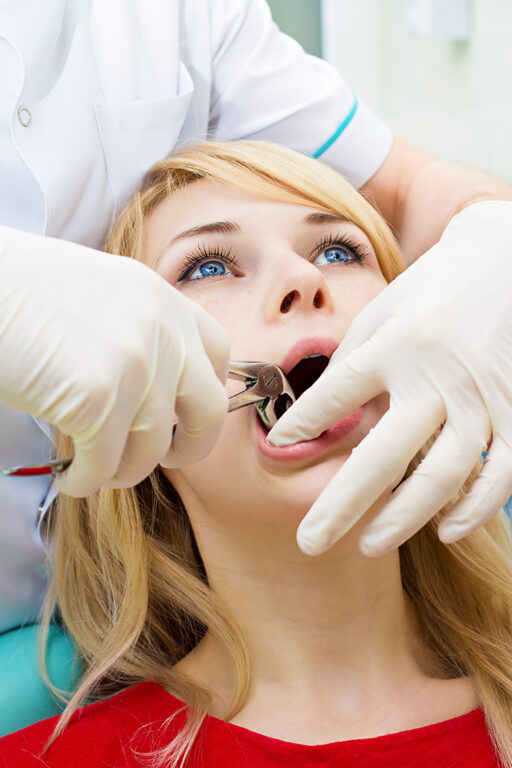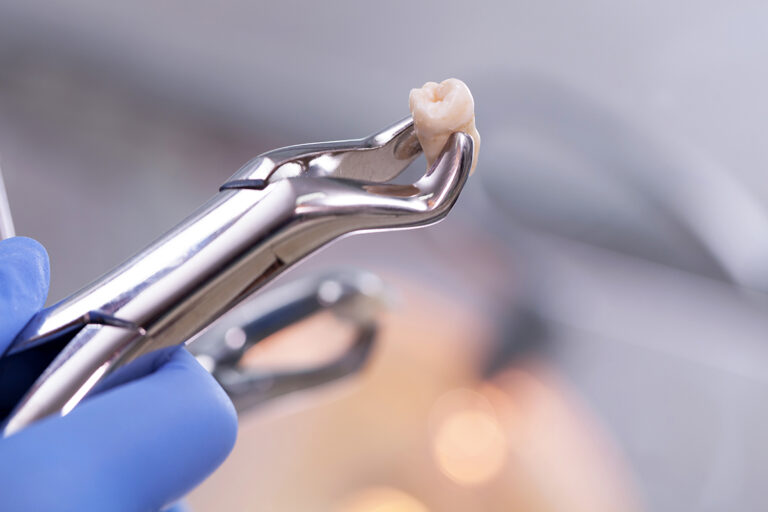Surgical Extraction
What Is “Surgical Extraction”?
Optimal oral health means having healthy natural teeth and gums, right?
Yes.
But sometimes, you have to let go of one or more problematic natural teeth in your mouth and undergo a tooth extraction procedure to have proper oral health and a brilliant smile.
If there’s something wrong with your natural tooth, your dentist will do their best to save it with the best possible dental procedure.
However, sometimes the tooth is too damaged beyond repair and cannot be saved, affecting your dental health. In some other cases, one or more natural teeth in the mouth contribute to orthodontic problems, such as overcrowding. Severe gum disease or periodontal disease will also elevate a person’s risk of the need for a tooth extraction.
In those cases, tooth removal will usually be the best viable option to promote dental health and enjoy a beautiful smile.
For Your Information
Gum disease or periodontal disease is a serious oral health problem and requires urgent care.
you can read more about gum disease here: About Gum Disease
Simple Extraction vs Surgical Extraction
Simple Extractions
Your dentist can easily remove the tooth/teeth visible in your mouth in most cases. A simple extraction will be performed in the dental chair in your dentist’s office and is not an involved procedure.
Simple extractions are done by a general dentist or an oral surgeon.
A simple extraction is a fast tooth extraction procedure with a speedy recovery. The dentist or an oral surgeon will numb your tooth and its surrounding area using local anesthesia.
Your dentist will use a dental instrument called a dental elevator to loosen the tooth during simple extractions. The loosened tooth then will be removed using extraction forceps.
Surgical Extraction
If the tooth that requires removal is not easily accessible and visible above your gum line, a surgical procedure is needed to remove the tooth. A surgical extraction is a more involved procedure done by a general dentist or an oral surgeon.
A surgical approach is needed when gum tissue or bone removal is required to remove a tooth.

Reasons for Surgical Extractions
When Is A Surgical Extraction Needed?
Your dentist will determine whether you need a simple extraction or surgical extractions by taking an X-Ray and a thorough oral examination.
Below you can find some of the reasons why your dentist may choose surgical procedures for a tooth extraction.
- Impacted teeth, for example, impacted wisdom teeth, require surgical removal.
- Teeth that have extensive damage and have no intact structure left will need surgical extractions.
- Your dentist may need to perform surgical techniques to extract a broken tooth at the gum line.
- A surgical procedure may be required to remove a tooth with long-curved roots.
- A cracked or fragile tooth may not be strong enough to undergo simple tooth extractions. Since chances are a cracked or fragile tooth breaks while the dentist is removing it, surgical tooth extractions may be a better option to have it removed.
- Your dentist may need to apply more force to remove teeth with larger and longer roots. This extra pressure may cause the tooth, the surrounding bone, and the jawbone to break or fracture. Therefore, your dentist may opt for a surgical extraction.
Note: A tooth may become extensively damaged due to injury or tooth decay.
Is Surgical Extraction Painful?
You have every right to be scared by hearing the word“surgery”, but don’t worry.
Surgical tooth extraction is considered minor oral surgery and performed under anesthesia.
Your dentist or dental surgeon will typically administer a local anesthetic to numb the tooth and its surrounding area to minimize any discomfort, whether your need surgical extractions or just a simple tooth extraction.
However, in some cases, general anesthesia for surgical tooth removal.
Unlike local anesthesia, which is in charge of numbing the extraction site, general anesthesia will make you unconscious. You will not feel any pain during your oral surgery and will usually have no recollection of the procedure afterwards.
How Is Surgical Extraction Performed?
What Does the surgical procedure Involve?
- Your dentist or oral surgeon will administer local anesthesia to numb the tooth, gum tissue, and bone surrounding it.
- A small incision will be made to the gum to access the impacted wisdom tooth or the broken tooth.
- In some cases, bone removal is needed to access the impacted tooth.
- Sometimes, the tooth needs to be sectioned (divided into smaller pieces) to be removed.
- The tooth is removed from its socket.
- Any sharp bone edges will be rounded off, and the socket will be washed out to remove any loose bone.
- The dentist places a piece of gauze pad over the extraction site to control bleeding.
- The gum tissue will be sutured.
Ask your dentist whether you need to come back to the office to remove the stitches.
Surgical Extraction Healing Process
Naturally, the healing process of surgical tooth extraction will be longer than a simple extraction.
Oral surgeons will typically ask patients to avoid any heavy physical activities for the next 48 to 72 hours following surgical removal of tooth/teeth.
The soft tissue in the mouth will start healing within 3 to 4 weeks after tooth extraction.
By following your dentist’s instructions and taking their prescribed pain medications, you can expect a fast recovery and will be fully recovered in just a few days.
Is Swelling Normal After Tooth Extractions?
Yes. Swelling is pretty normal and expected after dental procedures.
You can expect swelling following your oral surgery for 7 to 10 days, and after that, it will subside.
Taking prescription pain medication should be discussed with your oral surgeon or general dentist.

Surgical Extractions Aftercare
Post-Extraction Instructions
Following your dentist’s instructions is necessary to promote healing and prevent possible future problems.
- A blood clot is usually formed in the extraction site after the tooth is removed to protect the bone during healing. Avoid rinsing your mouth or spitting forcefully for at least 24 hours as you may dislodge the blood clot and delay the healing process.
- Avoid brushing the extraction site for 12 hours.
- Consider rinsing your mouth with warm saltwater. You may be advised to rinse your mouth with warm salt water for the next 4 to 5 days following a tooth extraction.
- Avoid eating hard or crunchy food and try to stick to soft foods. Eating soft foods like yogurt or applesauce is recommended to prevent pressure on the affected area.
- Consider placing an ice pack over the outside of your cheek to help minimize pain and swelling.
- Avoid smoking or using straws for at least 72 hours after surgery.
Contact your dentist if:
- The bleeding lasts for more than 24 hours after the surgery.
- You have severe pain that won’t reduce even by taking prescription pain medication.
- You have a fever.
- You notice pus oozing from the socket.
Pure Dentistry
Pure Dentistry is a professional dental clinic in Brisbane offering various types of dental procedures.
Our dental experts provide adult and pediatric patients with the latest technology in dentistry.
We have also different interest-free payment plans, so you don’t need to worry about the costs of your dental work.
Call us today on Pure Dentistry 07 3343 4869 and book an appointment or book online.




































